How to Reduce Food Waste
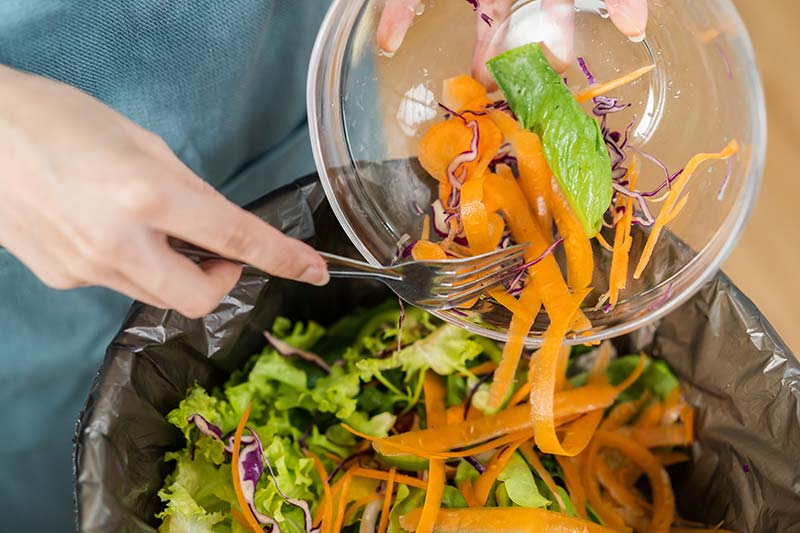
Food waste is a pressing global issue that affects our planet in numerous ways, such as contributing to climate change, squandering valuable resources, and exacerbating food insecurity. In this blog post, we'll explore practical and effective strategies for reducing food waste at home, which can help you:
- Minimise your environmental footprint
- Save money on groceries
- Support a more sustainable food system
By following these easy-to-implement tips, you can make a meaningful difference not only for the environment but also for your wallet and local community. So, let's dive into the world of food waste reduction and learn how to transform your kitchen into a greener, more sustainable space!
Key topics we'll cover in this blog post include:
- Planning and shopping wisely
- Proper food storage and organisation
- Cooking techniques and portion control
- Composting and recycling
- Raising awareness and getting involved
As you read through this blog, you'll find a mixture of simple, everyday practices and more innovative approaches that can help you minimise food waste and adopt a more sustainable lifestyle. Remember, every small action counts, and together, we can help reduce the 9.52 million tonnes of food wasted in the UK each year, as reported by Waste and Resources Action Programme (WRAP).
Planning and Shopping Wisely
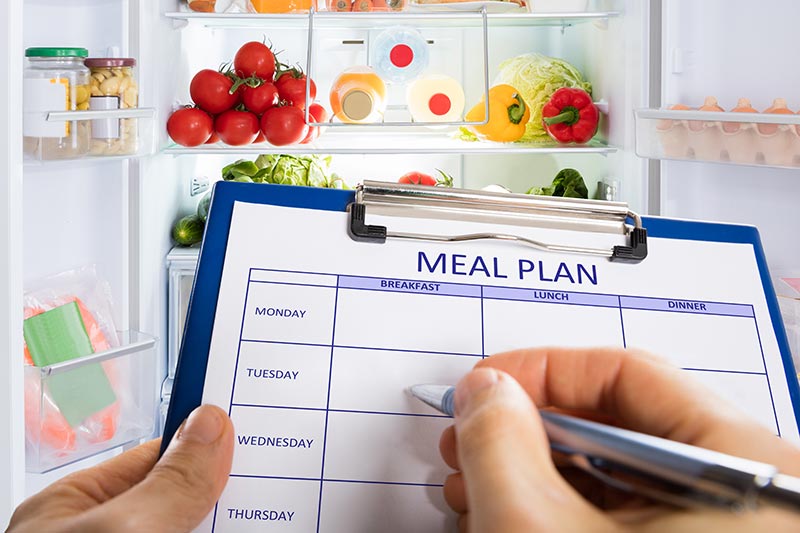
Making smart choices when planning meals and shopping can go a long way in reducing food waste. Here are some tips to help you shop more efficiently and make the most of the food you buy.
Create a Meal Plan and Shopping List
Before heading to the supermarket, take some time to plan your meals for the week. Consider the following:
- Inventory check: Assess what you already have in your fridge, freezer, and pantry. This will help you avoid buying duplicates and encourage you to use up existing items
- Balanced meals: Plan a mix of dishes that include various food groups to ensure a balanced diet
- Flexible recipes: Opt for recipes that can easily accommodate ingredient swaps, so you can use up what's on hand or take advantage of in-season produce
Once you've planned your meals, create a shopping list, and stick to it. This helps prevent impulse buys and ensures you purchase only what you need.
Buy Only What You Need
Resist the temptation to buy in bulk or stock up on perishable items during sales unless you're sure you can use or freeze them before they go bad. Buying smaller quantities more frequently can help reduce waste.
Shop for Seasonal and Local Produce
Fruits and vegetables that are in season tend to be fresher, more flavourful, and often less expensive. Additionally, supporting local farmers and businesses can help reduce the environmental impact of transportation and promote a more sustainable food system.
Purchase 'Ugly' or Odd-Shaped Fruits and Vegetables
Don't shy away from fruits and vegetables with imperfections. These items are just as nutritious and tasty as their more photogenic counterparts and buying them helps prevent them from going to waste.
By planning and shopping wisely, you'll set the foundation for a more sustainable kitchen and contribute to reducing food waste on a larger scale.
Proper Food Storage and Organisation
Ensuring proper food storage and organisation can help extend the shelf life of your groceries, leading to less waste. Here are some tips to help you make the most of your fridge, freezer, and pantry space.
Store Food in the Correct Place and Temperature
Different foods have specific storage requirements to maintain freshness and prevent spoilage. Keep the following guidelines in mind:
- Fridge: Store perishable items like dairy, meat, and fish at temperatures between 1°C and 5°C. Place ready-to-eat foods on the top and middle shelves, raw meat and fish on the bottom shelf, and fruits and vegetables in the crisper drawers
- Freezer: Use airtight containers or freezer bags to store foods for long-term storage. Make sure your freezer is set at or below -18°C
- Pantry/cupboards: Keep dry goods, canned items, and long-life products in a cool, dark, and dry place. If using a cupboard, avoid storing food items next to the oven and look to store perishables in low cupboards to avoid temperature changes, particularly in the summer
Use Airtight Containers and Proper Packaging
Invest in quality airtight containers or use beeswax wraps to keep food fresh for longer. Proper packaging can help prevent exposure to air and moisture, which can cause spoilage.
Understand Expiration Dates and 'Best Before' Labels
Learn the difference between 'use by' and 'best before' dates. 'Use by' dates are crucial for safety and should be followed strictly, while 'best before' dates refer to the product's quality. Many foods can still be safely consumed after their 'best before' date if stored correctly.
Organise Your Fridge and Pantry
An organised fridge and pantry make it easier to find and use up ingredients before they spoil. Keep these tips in mind:
- First in, first out: Rotate your food items by moving older products to the front and adding new items to the back. This ensures you use up items before they expire
- Designate spaces: Assign specific areas for different food categories, making it easier to locate and keep track of items
- Regular checks: Periodically go through your fridge and pantry to identify and use up items nearing their expiration dates
By paying attention to food storage and organisation, you can extend the life of your groceries and prevent unnecessary waste.
Cooking Techniques and Portion Control
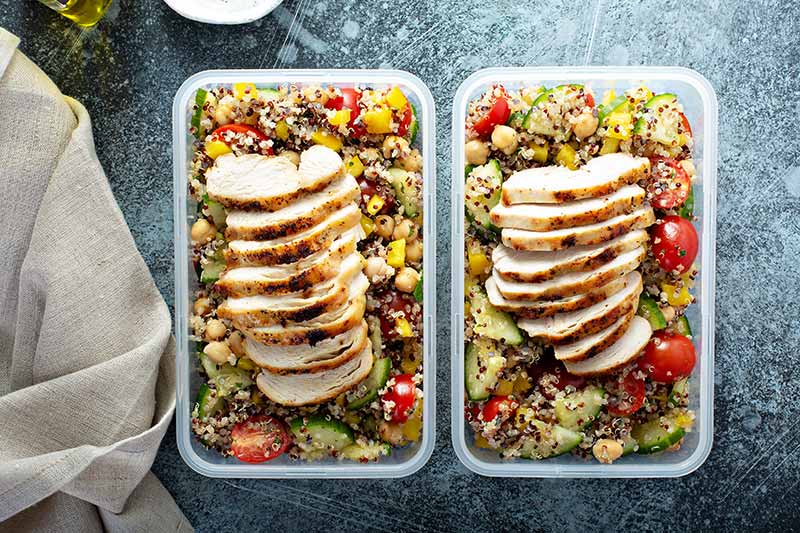
Adopting smart cooking habits and managing portion sizes can help reduce food waste while ensuring you enjoy delicious and satisfying meals. Here are some suggestions for efficient cooking and portion control:
Prepare Meals with Appropriate Portion Sizes
Cooking the right amount of food helps prevent leftovers from going to waste. Use measuring cups, scales, or other tools to portion ingredients accurately. Over time, you'll become more skilled at estimating portions, making it even easier to cook the right amount.
Bulk Cooking and Freezing Extra Portions
Preparing meals in large batches can save time and energy, but it's essential to store extra portions properly to avoid waste. Freeze individual servings in airtight containers, so you have convenient, ready-to-reheat meals for future use.
Repurpose Leftovers in Creative Ways
Transform leftovers into new and delicious meals instead of tossing them out. Use leftover vegetables in stir-fries, turn stale bread into croutons, or blend overripe fruit into smoothies. Get creative and find new ways to use up leftover ingredients.
Use Odds and Ends in Recipes
Don't be afraid to utilise parts of ingredients you might typically discard. For example, broccoli stems can be chopped and added to stir-fries, and beet greens can be sautéed as a side dish. By using every part of an ingredient, you reduce waste and make the most of your purchases.
Making Stock from Scraps
Save vegetable peels, onion skins, carrot tops, and other scraps to make a flavourful homemade stock. You can also save bones from cooked meat to create a rich bone broth. Store these scraps in a container in the freezer until you have enough to make a batch of stock.
Eating the Skin and Seeds of Foods
When safe and nutritious, consume the skin and seeds of fruits and vegetables. For example, the skin of apples, potatoes, and cucumbers is packed with vitamins and fibre. Whereas pumpkin seeds are not only safe to eat but also provide valuable nutrients.
By adopting these cooking techniques and focusing on portion control, you'll be well on your way to reducing food waste while enjoying a variety of delicious meals.
Packing Lunches and Snacks
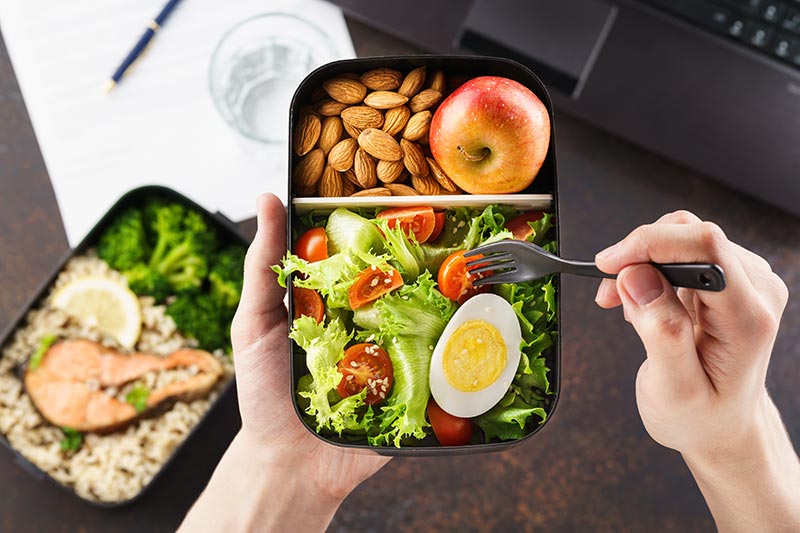
Preparing packed lunches and snacks is another effective way to reduce food waste while saving money and promoting healthier eating habits. Here are some tips for creating waste-free meals on the go:
Prepare Packed Lunches for Work or School
Instead of buying lunch every day, consider bringing a packed lunch from home. Not only will this save you money, but it's also an excellent opportunity to use up leftovers or ingredients nearing their expiration dates. Get creative with sandwiches, salads, wraps, and other portable meal ideas.
Incorporate Leftovers and Use Reusable Containers
Find ways to incorporate leftovers into your packed lunches by repurposing them into new dishes or including them as side items. Additionally, invest in reusable containers, cutlery, and water bottles to reduce single-use plastic waste.
Plan for Healthy and Satisfying Snacks
Prepare a variety of healthy snacks to stave off hunger throughout the day and prevent food waste at home. Some snack ideas include:
- Fresh fruit and vegetables
- Nuts and seeds
- Hummus or other dips with whole-grain crackers or veggie sticks
- Greek yogurt with granola or fruit
- Cheese and whole-grain crackers
By preparing packed lunches and snacks, you'll make better use of your groceries, save money, and contribute to a more sustainable lifestyle.
Composting and Recycling
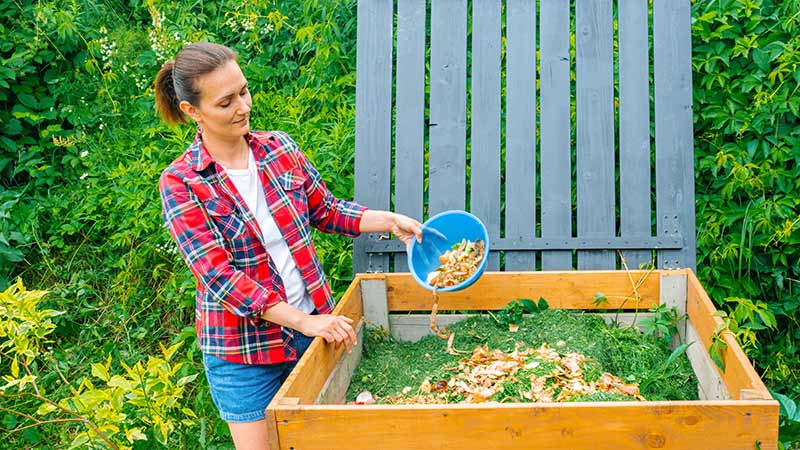
Proper disposal of food scraps and packaging materials is essential in reducing the environmental impact of food waste. Here's how you can get started with composting and recycling:
Set Up a Home Compost System
Composting is an excellent way to recycle food scraps and reduce the amount of waste sent to landfills. Start a compost pile or bin in your garden or use a countertop compost container with a carbon filter for odour control. You can compost fruit and vegetable peels, coffee grounds, eggshells, tea bags, and more.
Recycle Packaging Materials
Whenever possible, recycle packaging materials such as cardboard, glass, and plastic. Ensure you follow local recycling guidelines and properly clean and sort materials before recycling.
Learn About Local Composting and Recycling Programmes
Educate yourself about local composting and recycling programmes in your area. Some communities offer composting facilities, food waste collection services, or recycling centres to help residents dispose of waste responsibly.
By composting and recycling, you can help reduce the environmental impact of food waste and promote a more sustainable community.
Raising Awareness and Getting Involved
Sharing knowledge and supporting initiatives focused on food waste reduction can amplify your impact. Here are some ways you can raise awareness and get involved:
Share Tips and Tricks with Friends and Family
Discuss food waste reduction strategies with your friends and family. Share recipes, storage ideas, and shopping tips to help others adopt more sustainable practices.
Support Local Organisations and Initiatives
Get involved with local organisations or initiatives that focus on reducing food waste, such as food banks, community gardens, and educational programmes. Volunteering your time or donating resources can make a meaningful difference.
Advocate for Policy Changes
Stay informed about local and national policies related to food waste and support efforts to minimise waste on a larger scale. Engage with lawmakers and community leaders to help enact change.
Utilise Food Waste Reduction Apps and Websites
In addition to adopting sustainable practices at home, you can further reduce food waste by using apps and websites designed to help fight this issue.
Food waste apps connect users with local businesses and community members, offering surplus food at discounted prices or for sharing. Here are a few popular options available in the UK:
Too Good To Go connects users with local restaurants, cafés, and shops that have surplus food available at discounted prices. Reserve a "Magic Bag" of surplus items through the app and pick it up at a designated time. This helps businesses reduce food waste while allowing customers to save money on delicious meals.
Olio is a food-sharing app that enables users to share surplus food with their neighbours. Users can post pictures of surplus food items, and others nearby can request the items for free or at a low cost. This community-driven approach promotes sustainability and helps foster connections between neighbours.
Karma is another app that connects users with local restaurants and stores offering surplus food at discounted prices. Browse available items on the app, reserve your desired products, and pick up your order at the specified time. Karma helps both users and businesses save money and reduce food waste.
By utilising these food waste reduction apps and websites, you can take an active role in supporting local businesses and communities while working towards a more sustainable future. Explore these platforms and discover how they can help you further reduce food waste and promote sustainable living.
In addition to apps, several websites in the UK help reduce food waste and promote sustainability. These platforms connect users with local businesses and provide educational resources to help reduce food waste. Here are two popular options:
FairShare is a national charity that helps redistribute surplus food to those in need. They work with over 11,000 community groups and charities across the UK to tackle food waste and food poverty simultaneously. By connecting with FairShare, businesses can donate their surplus food, and individuals can volunteer their time or resources to help this vital cause.
WRAP (Waste & Resources Action Programme) is a UK-based charity that focuses on preventing waste, reducing carbon emissions, and promoting resource efficiency. They offer practical tips and tools for reducing food waste at home and also offer guidance for businesses, such as food labelling and waste reduction strategies.
By utilising these food waste reduction websites, you can play an active role in supporting local communities, reducing food waste, and promoting a sustainable future. Explore these platforms and discover how they can help you further reduce food waste and take a positive step towards change.
Conclusion
We hope the tips and strategies outlined in this blog have given you food for thought – pun intended – on ways to reduce food waste at home and contribute to a more sustainable future.
Remember, each step you take towards waste reduction matters, and when combined with the efforts of others, we can create a substantial impact on this global issue.

